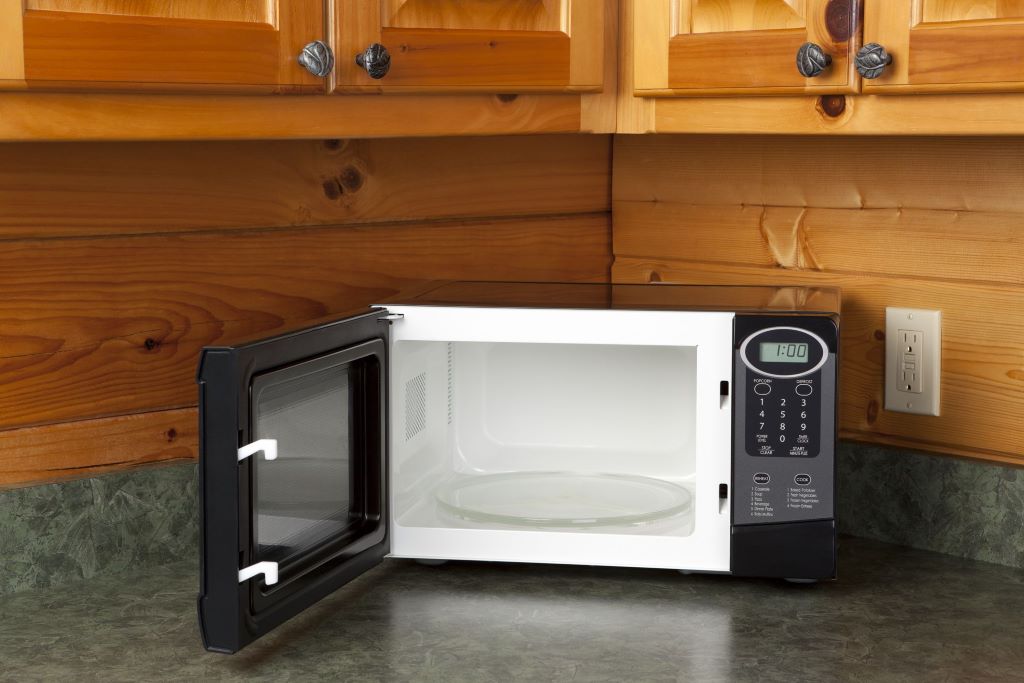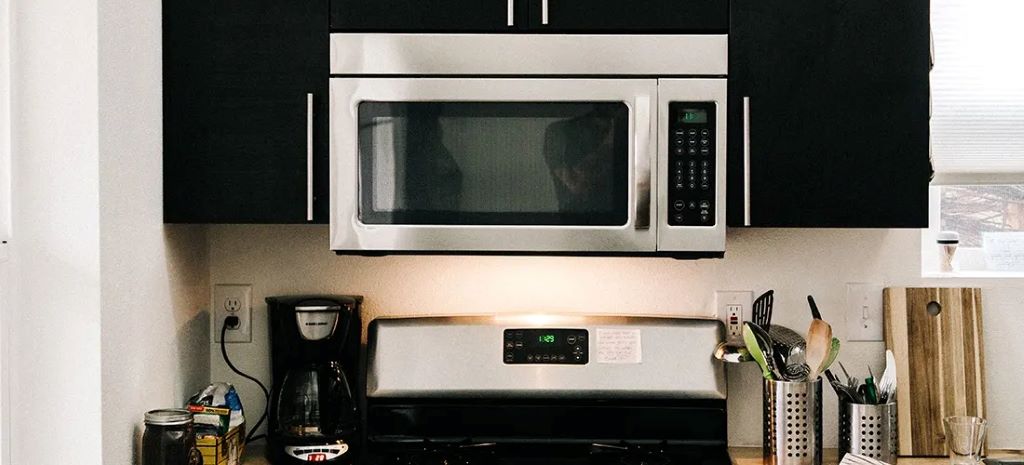
07 May Battling the Burn: A Guide to Removing Black Marks from Your Microwave
We’ve all been there. You reach for that leftover pizza, only to discover a fiery inferno has taken place inside your microwave. The culprit? Perhaps forgotten popcorn kernels or a plastic container that met an untimely demise. Now you’re left with a battlefield of black scorch marks and a lingering burnt popcorn aroma. Fear not, fellow food enthusiasts! Reclaiming your microwave from the clutches of char is entirely possible. This guide equips you with effective methods and safety precautions to banish those black burns and get your microwave sparkling clean.
Understanding the Burn: Severity and Solutions
The severity of the burn marks determines the cleaning approach. Here’s a breakdown:
- Light Burns: These are recent scorch marks, often caused by splattered food or minor spills.
- Moderate Burns: These are darker and more noticeable, possibly caused by forgotten food items.
- Heavy Burns: These are deep black stains, potentially accompanied by burnt odors, often from overheating incidents.
The good news: most burns, from light to moderate, can be tackled with common household ingredients. However, for heavy burns, consulting a professional or considering replacement might be necessary.

Safety First: Essential Precautions
Before diving into cleaning, prioritize safety:
- Unplug the Microwave: This is crucial to prevent electrical shock.
- Let it Cool Down Completely: A hot interior can cause burns. Wait until the microwave is entirely cool to the touch.
- Open a Window: Harsh chemical fumes might be released during cleaning. Ventilation is key.
- Rubber Gloves: Protect your hands from harsh cleaning agents.
Natural Cleaning Powerhouses for Light to Moderate Burns
These readily available ingredients are your allies for tackling everyday microwave mishaps:
- Baking Soda: This gentle abrasive is a natural deodorizer. Make a paste with baking soda and water. Apply it to the burn marks, let it sit for 15-20 minutes, then scrub with a non-abrasive sponge or microfiber cloth. Rinse thoroughly with a damp cloth.
- Vinegar: A powerhouse for removing grease and grime. Fill a microwave-safe bowl with a 1:1 vinegar-water solution. Microwave on high for 5-7 minutes (the solution should boil). Let it stand for 10 minutes with the door closed to loosen grime. The steam will help soften the burn marks for easier removal with a damp cloth.
- Lemon: The citric acid in lemons cuts through grease and offers a refreshing scent. Cut a lemon in half, squeeze the juice onto a damp cloth, and scrub the burn marks. Rinse thoroughly.
Pro Tip: Combine the power of baking soda and vinegar! Make a paste with baking soda and a little vinegar. Apply it to the burn marks, let it sit for 30 minutes, then scrub and rinse.
Heavy-Duty Solutions for Stubborn Stains (Use with Caution)
For stubborn burns, consider these options, but exercise caution due to their stronger nature:
- CLR Cleaner (Calcium, Lime & Rust Remover): This cleaner effectively removes tough stains. Apply it to a damp cloth, wear gloves, and scrub the burn marks. Rinse thoroughly with a damp cloth and follow with a vinegar-water solution to neutralize any remaining cleaner residue.
- Acetone (Nail Polish Remover): This solvent tackles heavy burns. However, it has strong fumes and can damage the microwave’s interior if not used carefully. Only use a small amount on a well-ventilated space. Apply a tiny amount to a damp cloth, wearing gloves, and scrub a small test area first. If no damage occurs, proceed cautiously with the cleaning. Rinse thoroughly with a damp cloth followed by a vinegar-water solution.
Important Note: Always test any cleaning solution on a hidden area inside the microwave before applying it directly to the burn marks. This ensures it doesn’t cause discoloration or damage.
Buffing Out the Battle Scars: Final Touches
Once the burn marks are gone, it’s time for a final polish:
- Dish Soap and Water: Wipe down the entire microwave interior with a solution of warm water and dish soap to remove any cleaning residue. Rinse with a clean, damp cloth.
- Dry Thoroughly: Use a clean, dry cloth to remove any remaining moisture. Leaving moisture inside the microwave can promote mold growth.
Preventing Future Battles: Keeping Your Microwave Clean
Here are some handy tips to prevent future burn battles:
- Use Microwave-Safe Containers Only: Avoid placing anything metal, plastic, or non-heat resistant in the microwave. Refer to the container’s label for microwave safety.
- Cover Food with Paper Towels: This prevents splatters and food from drying onto the microwave walls.
- Clean Regularly: Wiping down the interior after each use with a damp cloth helps prevent
Addressing Lingering Odors
Burned food often leaves an unpleasant odor. Here’s how to tackle it:
- Citrus Blast: After cleaning, place a microwave-safe bowl with water and lemon slices inside. Heat for 2-3 minutes, and let sit for 10 minutes with the door closed. The scent will help neutralize lingering odors.
- Baking Soda Bowl: Leave a small bowl of baking soda inside the microwave overnight. Baking soda absorbs odors naturally.
- Vanilla Extract: Put a few drops of vanilla extract on a cotton ball and place it inside the microwave overnight. The sweet aroma will replace the burnt smell.
Cooking with Friends: Fun, Flavorful Feasts for Teen Get-Togethers
For Extremely Severe Burns
If the burn marks are too stubborn, etched into the microwave lining, or you detect an electrical burning odor, a professional consultation becomes vital. Here’s what to consider:
- Deep Cleaning by an Appliance Technician: A technician can provide specialized cleaning solutions and assess for any underlying damage.
- Microwave Replacement: Depending on the age and damage extent, replacement might prove more cost-effective than repair.

Sorry, the comment form is closed at this time.